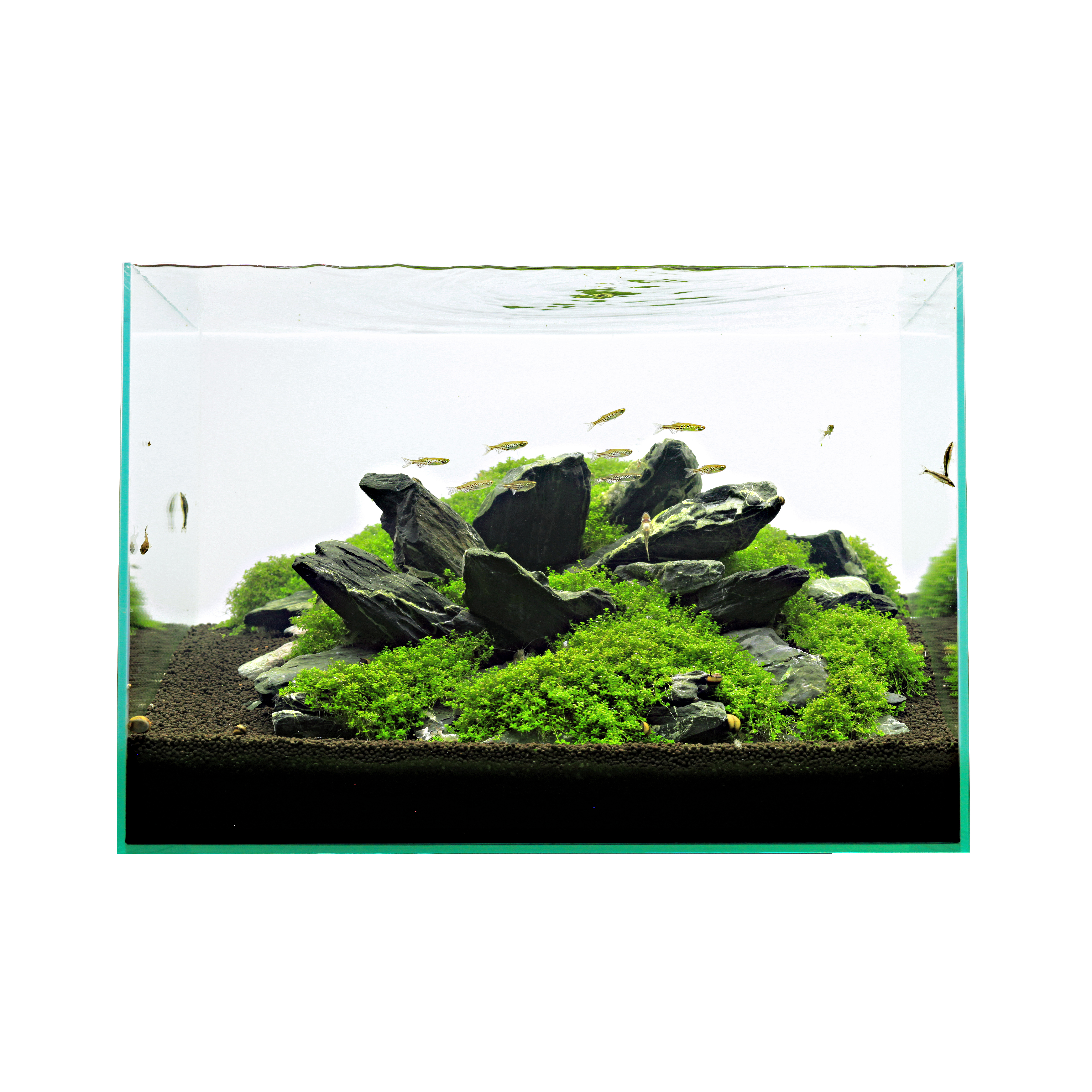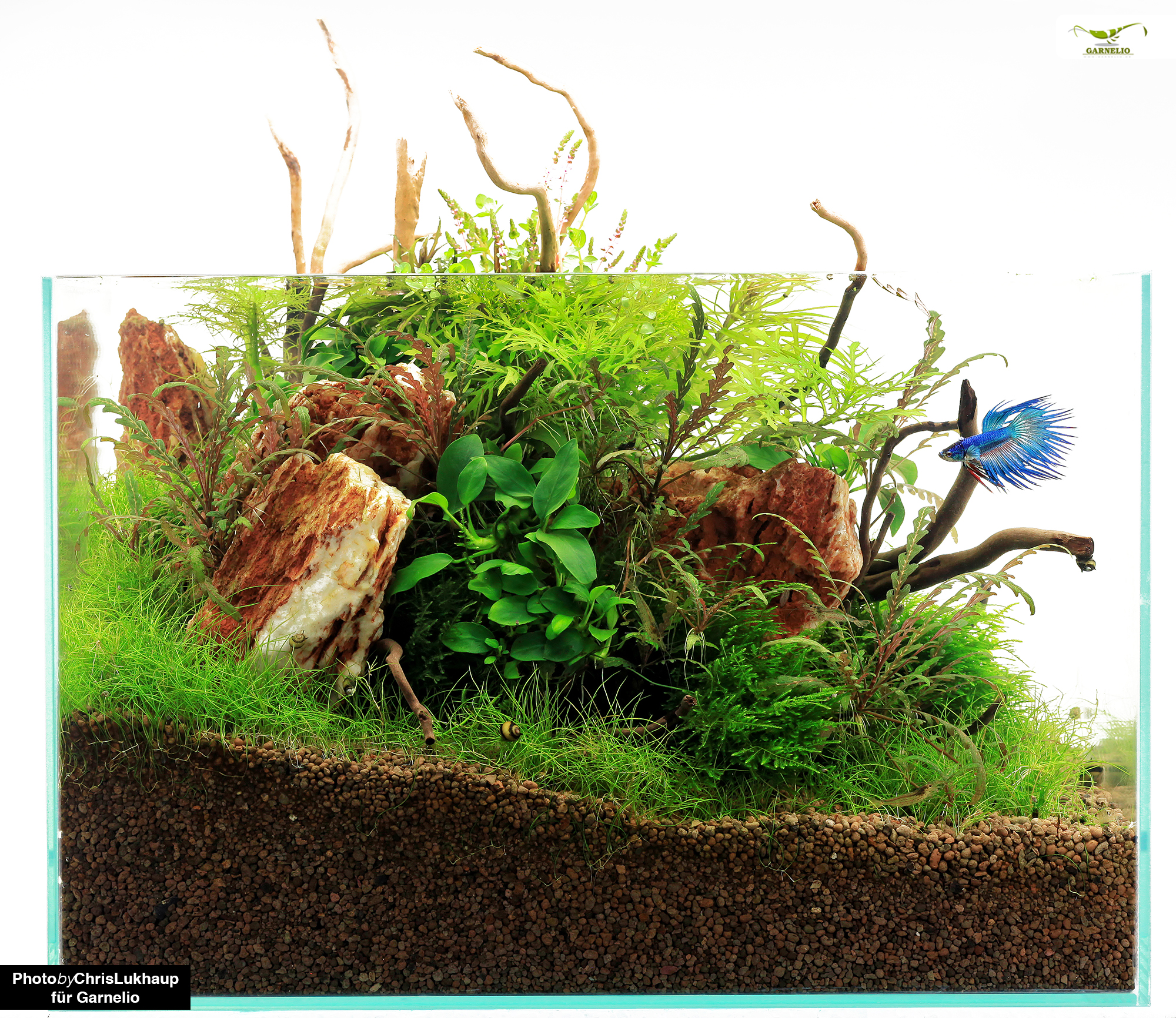Move with aquarium
Moving is simply anathema to many people, and moving with an aquarium sounds even more complicated and cumbersome... but don't worry, if you know what you're doing, and if you're systematic about moving with an aquarium, it's all not so bad
Table of contents
- Preparations - no food before the move
- Preparations - mulching the substrate before the move
- What happens to the filter?
- What happens to the water?
- Moving with a nano aquarium
- Moving with a bigger tank - the fish
- Moving with a larger tank - preparing the aquarium
- Moving with a larger tank - transporting the aquarium
- Arrived at the new place of residence
Preparations - no food before the move
Fish and invertebrates break down stress hormones through their gills, and likewise pollutants from food. If you know that the animals are facing a stressful situation, do not feed them the day before the move or on the day of the move itself, so as not to put additional stress on the gill tissue. Ideally, you should also keep your hands off the food the next day. Three days without artificial food definitely won't kill the fish or even shrimp, snails, crabs or shrimps in the aquarium, and abstaining from food can really help them cope with the stress of the move.
Preparations - mulching the substrate before the move
To avoid disturbing large amounts of mulm during transport, you can thoroughly vacuum mulm a few days before the move. With a mulm vacuum cleaner of suitable size this is the most stress-free and quickest way.
What happens to the filter?
The nitrifying bacteria that work biologically in the filter live in nature mainly in the soil and need oxygen to survive - much more urgently than water! Therefore, you should take the filter media out of the filter and transport it moist. This ensures that the bacteria get enough oxygen and continue to live. As long as the filter material does not dry out completely, they will survive for a long time. Filter materials in an external filter or backpack filter can simply be left in the container after the filter has been completely drained, an internal filter is left to drain and packed in a bag if necessary. The filter material should in no case stand in the water. At this opportunity you could also remove some mud from the filter - but please do not clean it pore-deep!
What happens to the water?
It depends a bit on which water you use. If you operate the aquarium with tap water and the water at the new place of residence corresponds approximately to the water at the old place of residence, you drain the water from the aquarium, discard it and fill up with fresh water at the new place of residence - like a large water change of approx. 80%. If you are afraid of residues in the water, use an appropriate water conditioner that binds pollutants and makes them harmless. If the water at the new place of residence does not correspond to the water at the old one, the difference can be too glaring, which can lead to stress for fish and invertebrates and subsequently to further problems. In that case, catch the water in canisters when draining and take it with you. If you are working with osmosis water and an appropriate hardening salt anyway, the above applies - drain the water, discard it, fill it up with prepared fresh water at the new location and enjoy the nice big water change.

Moving with a nano aquarium
From a nano aquarium up to about 20 or 30 liters capacity, simply drain about 10-15 cm of water just before the move. The inhabitants can remain in the aquarium. Aquarium decorations that could topple over and hit the glass should be removed as well as all technical equipment such as the light, filter, heater and so on. The filter is best stored as described in the previous paragraph. If the nano tank only has a cover pane and no tightly closing cover, it is best to use a plastic bag or cling film to protect the aquarium from moving dirt and the moving truck from spilling water. The cover is well packed separately and carefully transported. For stabilization and better carrying, it is best to pull the nano tank together with the underlay mat onto a thick wooden plate, on which it fits completely, so that the bottom pane is not exposed to uneven pressure and possibly cracks. If you are moving far away, you should add an oxydator or a battery-powered air pump with a bubbling stone to the aquarium for better oxygenation of the inhabitants.
Moving with a larger tank - the fish
A little more effort is a move with a larger aquarium. First, you catch here the fish and invertebrates fully out. Large buckets with a volume of 20 liters or more and tight-fitting lids are suitable for transport. You fill these buckets to about one third with water from the aquarium. They are not made completely full, because we need the atmospheric oxygen for gas exchange with the water, so that the aquarium animals do not suffocate. If the move is over a longer distance and the travel time is longer, an oxydator in the bucket is certainly a good idea. If you can't or don't want to procure so many large buckets, resort to fish transport bags, transported in a sturdy container if necessary. Be sure to use especially sturdy rubber bands for sealing to avoid unpleasant surprises in the moving truck.
Moving with a larger tank - preparing the aquarium
Remember that 1 liter of water weighs 1000 grams and that a glass aquarium set up is heavy enough as it is. So drain as much water as possible! Larger stones are best taken out and transported separately. Any decorations that might tip against the aquarium glass during the move are either relocated or taken out as well. Place stones, roots, etc. in a watertight container, preferably one with a tight-fitting lid. If there are still shrimp sitting here in any nooks and crannies, they have a good chance of surviving - as long as the gills are moist, nothing will happen to them.

Moving with a larger tank - transporting the aquarium
Even a large aquarium is easier to carry if it is placed on a sturdy wooden base. Please do not forget an appropriate base, here you can use the moss rubber mat that is under the aquarium anyway. If the aquarium has a cover, just leave it on the tank. Open aquariums are best closed with cling film or plastic wrap, so that the plants in the aquarium do not dry out. If you don't want to use plastic, generously line the tank with damp Zewa, which serves the same purpose.
Arrived at the new place of residence
The first step is to set up the tank again in the new home. If the substrate was stirred up during transport, it should first be smoothed out and any plants that have been loosened should be put back in place. Then the decoration is put back into the tank and water is carefully added (if necessary, let it run over a plate so that the substrate is not immediately stirred up again). Afterwards the technique is mounted again, the filter is put into operation, the heating rod (if available and necessary) is plugged in. Once the water has reached the required temperature again, the separately transported fish and invertebrates can be inserted. A bacterial starter can help the filter to get going again properly right away and helps the aquarium biology to quickly adapt to the changed conditions.

